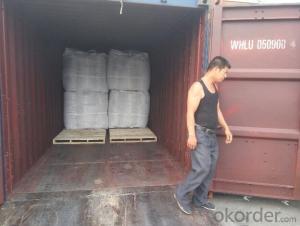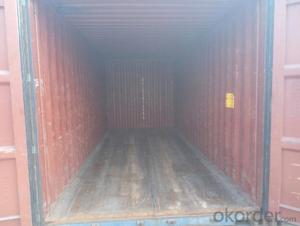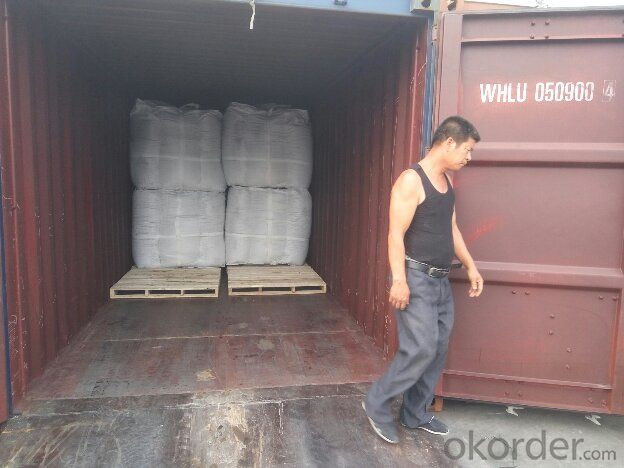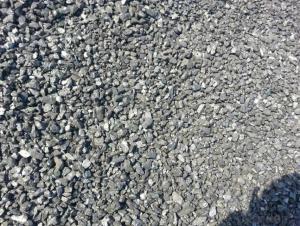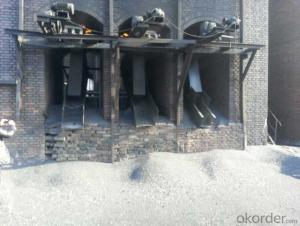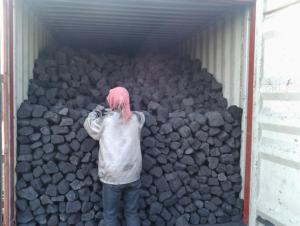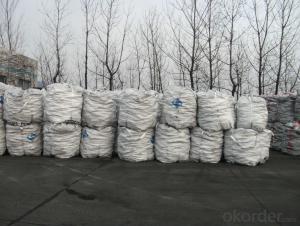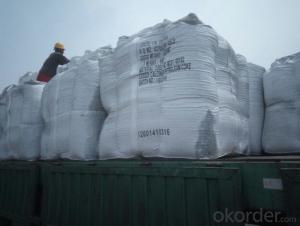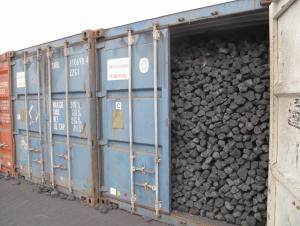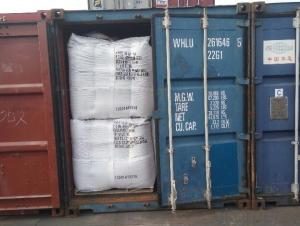Foundry Coke with small Size with Ash 10%
- Loading Port:
- Shanghai
- Payment Terms:
- TT OR LC
- Min Order Qty:
- 21.8
- Supply Capability:
- 1018 m.t./month
OKorder Service Pledge
OKorder Financial Service
You Might Also Like
Brief Introduction
Foundry Coke is the main fuel of melting iron in the oven. It can melt the materials in the over, make the iron reach great heat, and keep good air permeability by sustain stock column. Thus, the foundry coke should have the characteristics of big block, low reactivity, small porocity, enough anti-crush strengh, low ash and low sulphur.
The coke handled by our cooperation is made from superior coking coal of Shanxi province. Provided with the advantages of low ash, low sulphur and high carbon. Our coke is well sold in European, American, Japanese and South-east Asian markets. Our owned Coke plant are located in Shanxi Province and supplying of you many kinds of coke.
we supply Foundry Coke long-term, its characteristic is best strength, low sulfur and phosphorus,thermal stability.
Specifications:
ASH % | 8% max | 10% max | 12% max |
V.M.% MAX | 1.5% max | 1.5% max | 2% max |
SULFUR % | 0.65% max | 0.65% max | 0.7% max |
MOISTURE | 5% max | 5% max | 5% max |
Size | 80mm-120mm,80-150,100-150mm, or as request | ||
Features
1. Our quality is always quite good and stable which is producing and packing according to customers' requirements.
2. Putting Client profile into first, achieved mutual benefit.
3. Good partner on business. It's a good and wise choice for customers' to purchase from us. It's our great honor to cooperate with you. It is more -widely used around the world
4. We can supply documents as follows:
- bill of loading,
-Invoice,
-Packing List
-Insurance
-standard inspection pictures of the container as specified by INSPECTORATE
-or more requested by buyer.
Pictures

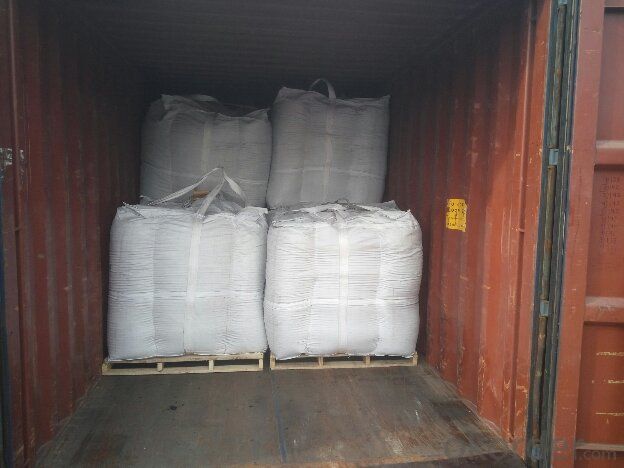
FAQ
1. What is the packing?
In 25kg bag/ In jumbo bags without pallet/ Two jumbo bags with one pallet/ or as customers’ request
2. What is the production capacity?
10 thousand tons per month
3 What is payment term?
Irrevocable LC at sight/ 20% down payment by T/T and 80% against BL copy byT/T/ or to be discussed
4 What is the service?
We will send sample to the third party(CIQ, CCIC, SGS,BV or to be discussed) for checking, and present the test certificate and loading repot of shipment.
- Q: How does deforestation contribute to carbon dioxide levels in the atmosphere?
- Increased carbon dioxide levels in the atmosphere are significantly influenced by deforestation. Trees play a crucial role as natural carbon sinks, absorbing carbon dioxide through photosynthesis and storing it in their trunks, branches, and leaves. However, when forests are cleared or burned down for purposes like agriculture, logging, or urbanization, the stored carbon is released back into the atmosphere as carbon dioxide. The removal of trees directly diminishes the planet's ability to absorb carbon dioxide, resulting in an imbalance in the carbon cycle. Furthermore, deforestation disrupts the carbon cycle by hindering the process of photosynthesis, which is vital for converting carbon dioxide into oxygen and organic compounds. Additionally, deforestation indirectly contributes to increased carbon dioxide levels in the atmosphere through the decomposition of organic matter. When trees are cut down or burned, the stored carbon they contain is released as carbon dioxide, intensifying greenhouse gas emissions. Moreover, deforestation impacts the water cycle, leading to dryer conditions in affected areas. This causes soil to become arid, making it less suitable for plant growth and reducing the potential for carbon absorption through reforestation efforts. The cumulative effect of deforestation on carbon dioxide levels is significant. Studies indicate that deforestation accounts for approximately 10-15% of global carbon emissions, thus making it one of the leading contributors to climate change. The rise in atmospheric carbon dioxide levels, along with other greenhouse gases, contributes to the greenhouse effect, trapping heat in the atmosphere and causing global warming. To mitigate climate change and decrease carbon dioxide levels, it is crucial to address deforestation. Implementing sustainable forestry practices, promoting reforestation efforts, and protecting existing forests are essential steps in preserving carbon sinks and reducing greenhouse gas emissions.
- Q: What are the potential uses of carbon nanomaterials in medicine?
- Carbon nanomaterials have shown great promise in the field of medicine due to their unique properties. One potential use of carbon nanomaterials is in drug delivery systems. Their high surface area-to-volume ratio allows for efficient loading and release of therapeutic agents, enabling targeted and controlled drug delivery. This could lead to more effective treatments with reduced side effects. Another potential use is in medical imaging. Carbon nanomaterials, such as carbon nanotubes and graphene, have excellent optical and electrical properties that can enhance imaging techniques like MRI and CT scans. This could improve the accuracy and resolution of medical imaging, enabling better diagnosis and monitoring of diseases. Carbon nanomaterials also have antibacterial properties which can be utilized in wound healing and infection control. Nanostructured carbon materials can effectively kill bacteria and prevent the formation of biofilms, which are often resistant to conventional antibiotics. This could potentially revolutionize the treatment of infections, especially those caused by antibiotic-resistant bacteria. Furthermore, carbon nanomaterials have the potential to be used in tissue engineering and regenerative medicine. Their biocompatibility, mechanical strength, and electrical conductivity make them suitable for creating scaffolds to support tissue growth and promote regeneration. Carbon nanomaterials could also be used to enhance the electrical stimulation of tissues, aiding in nerve regeneration and improving the functionality of artificial organs. In addition to these applications, carbon nanomaterials have been explored for their ability to detect and monitor diseases at an early stage. Their unique electronic and optical properties can be utilized in biosensors and diagnostic devices, allowing for sensitive and specific detection of biomarkers associated with various diseases. While the potential uses of carbon nanomaterials in medicine are vast, it is important to note that further research and development are required to ensure their safety, efficacy, and long-term effects. Regulatory considerations and ethical concerns surrounding the use of nanomaterials in medicine also need to be addressed. Nonetheless, the promising capabilities of carbon nanomaterials offer hope for more advanced and personalized medical treatments in the future.
- Q: What is the role of carbon in the formation of coal, oil, and natural gas?
- The formation of coal, oil, and natural gas relies heavily on carbon. Carbon is a crucial component of these fossil fuels, along with varying amounts of hydrogen, sulfur, nitrogen, and other elements. To begin the formation process, organic matter, such as dead plants and marine organisms, accumulates in oxygen-limited environments. Over a span of millions of years, the organic matter undergoes intense heat and pressure, resulting in a process called carbonization. During carbonization, the carbon within the organic matter undergoes chemical transformations, converting it into solid, liquid, or gaseous hydrocarbon compounds. The specific conditions under which carbonization takes place determine the specific type of fossil fuel that will be produced. In the case of coal, the organic matter primarily consists of land-based plant material. Through high pressure and temperature, carbonization converts this plant material into solid coal. The duration and intensity of the carbonization process determine the carbon content of the resulting coal. Different types of coal, such as lignite, bituminous, and anthracite, exhibit varying carbon content and energy density. Conversely, oil is formed from marine organisms like plankton and algae. As these organisms die, they descend to the ocean or lake floor and gradually become buried beneath layers of sediment. Over time, the heat and pressure cause carbonization, transforming the organic matter into a liquid hydrocarbon mixture known as crude oil. This crude oil can subsequently undergo further processing to yield various petroleum products. Natural gas, on the other hand, consists primarily of methane (CH4) and forms under similar conditions as oil. However, the carbonization process occurs at higher temperatures and pressures, leading the organic matter to decompose into gaseous hydrocarbon compounds. Natural gas can be found alongside oil deposits or trapped within underground rock formations, such as shale or sandstone. In summary, carbon serves as the essential foundation for the formation of coal, oil, and natural gas. Its presence within organic matter, combined with optimal conditions of heat, pressure, and time, culminates in the creation of these valuable energy resources that significantly contribute to powering our modern world.
- Q: What materials can be carbonitriding?
- Low temperature carbonitriding for high alloy tool steel, high-speed steel tools, etc., in temperature carbonitriding is under great pressure not only in carbon steel wear parts, high temperature carbonitriding is mainly used for medium carbon steel and alloy steel under great pressure.
- Q: What are the effects of carbon emissions on the stability of the atmosphere?
- Carbon emissions have significant effects on the stability of the atmosphere. The primary consequence is the intensification of the greenhouse effect, leading to global warming and climate change. Carbon dioxide (CO2), the main greenhouse gas emitted by human activities, traps heat in the atmosphere, preventing it from escaping into space. As a result, the Earth's average temperature rises, causing a range of adverse impacts. One effect of carbon emissions is the alteration of weather patterns. Increased atmospheric temperatures can result in more frequent and intense heatwaves, droughts, and wildfires. Conversely, it can also lead to heavier rainfall and more frequent and intense storms, including hurricanes and cyclones. These changes in weather patterns disrupt ecosystems, agriculture, and water availability, posing risks to human health, food security, and infrastructure. Another consequence of carbon emissions is the melting of polar ice caps and glaciers. As the atmosphere warms, ice sheets in Antarctica and Greenland melt, contributing to rising sea levels. This poses a significant threat to coastal regions, increasing the risk of inundation, erosion, and the loss of valuable ecosystems. The displacement of coastal communities and the loss of land also create social and economic challenges. Furthermore, carbon emissions contribute to ocean acidification. When CO2 is absorbed by seawater, it reacts with water molecules, forming carbonic acid. This process lowers the pH of the ocean, making it more acidic. Acidic waters harm marine life, particularly coral reefs and other organisms that rely on calcium carbonate to build their shells and skeletons. The degradation of coral reefs not only affects marine biodiversity but also impacts the livelihoods of communities dependent on fisheries and tourism. The stability of the atmosphere is also impacted by the feedback loops triggered by carbon emissions. For instance, as the Earth warms, permafrost in the Arctic regions starts to thaw, releasing large amounts of methane, another potent greenhouse gas. This release of additional greenhouse gases further amplifies global warming, creating a vicious cycle. In summary, carbon emissions have profound effects on the stability of the atmosphere. They contribute to global warming, altering weather patterns, causing the melting of ice caps, acidifying the oceans, and triggering feedback loops. Addressing carbon emissions through sustainable practices, renewable energy sources, and international cooperation is crucial to mitigate these effects and ensure a stable and habitable atmosphere for future generations.
- Q: What is carbon dioxide?
- Carbon dioxide (CO2) is a colorless and odorless gas that consists of carbon and oxygen atoms. It is formed through the combustion of fossil fuels, as well as the natural processes of respiration and volcanic activity. Carbon dioxide plays a crucial role in the Earth's atmosphere as a greenhouse gas, trapping heat and contributing to the planet's overall temperature. While it occurs naturally, human activities such as burning of fossil fuels and deforestation have significantly increased its concentration in the atmosphere, leading to global warming and climate change. Carbon dioxide is also a byproduct of various industrial processes, such as cement production and power generation. Efforts to reduce carbon dioxide emissions are essential to mitigate the effects of climate change and maintain a sustainable environment.
- Q: Whether the CO2 content in the boiler smoke can not be measured, the measurement of carbon content of fly ash ah? @ @ Thank you very much!!!
- No The amount of unburned carbon in the fly ash is not carbon dioxide.CO2 measurements are simple.
- Q: How does carbon affect the formation of blizzards?
- Carbon does not directly affect the formation of blizzards. Blizzards are primarily caused by the collision of warm and cold air masses, resulting in heavy snowfall and strong winds. However, carbon emissions and climate change can influence weather patterns, potentially leading to more intense or frequent blizzards in certain regions due to alterations in atmospheric conditions.
- Q: What are the effects of carbon emissions on the stability of desertification?
- Carbon emissions have a significant impact on the stability of desertification. The release of carbon dioxide and other greenhouse gases into the atmosphere through human activities, such as burning fossil fuels and deforestation, contribute to global warming. This increase in temperature leads to several adverse effects on desertification. One of the key consequences of carbon emissions is the alteration of precipitation patterns. As the planet warms, the evaporation rate increases, causing more water to be held in the atmosphere. This results in reduced rainfall in many regions, including arid and semi-arid areas already prone to desertification. The decrease in water availability exacerbates the dry conditions, making it easier for desertification to occur and intensify. Moreover, higher temperatures caused by carbon emissions contribute to the acceleration of soil erosion. As the land heats up, it becomes more prone to erosion through wind and water. This leads to the loss of topsoil, which is crucial for plant growth and stability. Without a stable layer of topsoil, vegetation struggles to establish and survive, ultimately contributing to the expansion of deserts. Furthermore, carbon emissions also impact the health and productivity of plant communities. Increased levels of carbon dioxide in the atmosphere can stimulate plant growth in some cases, but this often leads to the proliferation of invasive species that are better adapted to the changing conditions. These invasive species outcompete native plants, reducing biodiversity and further destabilizing the ecosystem. Additionally, as desertification progresses, the loss of plant cover results in reduced carbon sequestration capacity, leading to even higher carbon dioxide levels in the atmosphere. In conclusion, carbon emissions have detrimental effects on the stability of desertification. They disrupt precipitation patterns, accelerate soil erosion, reduce plant productivity, and diminish the capacity to sequester carbon. It is crucial to reduce carbon emissions through sustainable practices and conservation efforts to mitigate the impacts on desertification and prevent its further progression.
- Q: What is carbon neutral tourism?
- Carbon neutral tourism is a type of tourism that aims to minimize or eliminate the carbon footprint produced by travel and related activities. It seeks to balance the amount of carbon dioxide released into the atmosphere with an equal amount of carbon dioxide removed or offset. To achieve carbon neutrality, tourism operators and destinations take various steps to decrease their greenhouse gas emissions. This can involve using renewable energy sources, implementing energy-efficient practices, promoting sustainable transportation options, and adopting eco-friendly technologies. Additionally, they often employ carbon offsetting, which means investing in projects that reduce greenhouse gas emissions elsewhere, such as reforestation or renewable energy initiatives. The concept of carbon neutral tourism acknowledges the significant role that the travel and tourism industry plays in global carbon emissions. According to the United Nations World Tourism Organization, tourism accounts for approximately 8% of global greenhouse gas emissions. By embracing carbon neutrality, the industry accepts its responsibility to minimize its environmental impact and contribute to efforts to combat climate change. One of the main advantages of carbon neutral tourism is the reduction of greenhouse gas emissions, which helps fight climate change. By adopting sustainable practices and offsetting any remaining emissions, destinations and operators can play a vital role in preserving natural resources, protecting biodiversity, and minimizing pollution. Moreover, carbon neutral tourism can also enhance the reputation and competitiveness of businesses and destinations, attracting environmentally conscious travelers who prioritize sustainability. However, it is crucial to recognize that achieving carbon neutrality is a complex task that requires commitment and collaboration from all stakeholders in the tourism industry. It involves measuring and monitoring emissions, setting reduction targets, implementing sustainable practices, and investing in carbon offset projects. Furthermore, transparency and credibility are essential to ensure that carbon offset initiatives are verifiable and genuinely contribute to emissions reductions. In conclusion, carbon neutral tourism is a proactive approach to minimizing the environmental impact of travel and tourism activities. It involves reducing emissions and offsetting any remaining ones to achieve a net-zero carbon footprint. By embracing carbon neutrality, the tourism industry can contribute to global efforts to mitigate climate change while simultaneously promoting sustainable practices and attracting environmentally conscious travelers.
Send your message to us
Foundry Coke with small Size with Ash 10%
- Loading Port:
- Shanghai
- Payment Terms:
- TT OR LC
- Min Order Qty:
- 21.8
- Supply Capability:
- 1018 m.t./month
OKorder Service Pledge
OKorder Financial Service
Similar products
Hot products
Hot Searches
